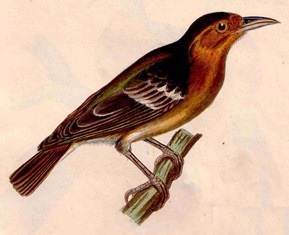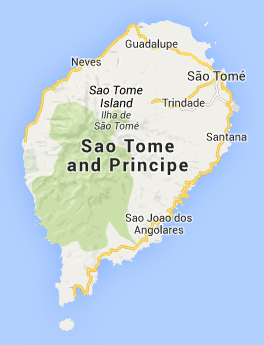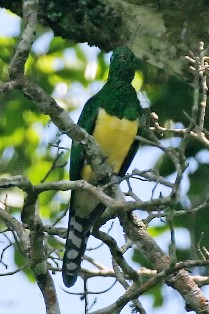Weaver Wednesday [66]: Sao Tome Weaver 2013-09-18 (420)
 Weaver Wednesday
Weaver Wednesday

The Sao Tome Weaver Ploceus sanctithomae is a distinctive short-tailed weaver, easily separated from other weavers on Sao Tome. It has a black cap, orange-buff underparts, and dark brown upperparts with 2 conspicuous pale wing-bars. The female is similar to the male but duller. The juvenile is duller still, with the underparts mainly white. These weavers are noisy, making it easy to find. This is one of the 'nuthatch' (bark-gleaning) weavers, the others being Brown-capped Weaver, Preuss's Weaver, Bar-winged Weaver, Usambara Weaver and Olive-headed Weaver.
The Sao Tome Weaver is restricted to Sao Tome Island in the Gulf of Guinea, where it is common and locally abundant in forests in the south-west and central east parts of the island (see Google map below).

The Sao Tome Weaver inhabits primary and secondary woodland but not the grassy wooded savannas in the north. It lives in pairs and family parties, during and after the breeding season, and forms flocks of at least 20 birds outside the breeding season. Sao Tome Weavers are noisy, singing and often calling.
Its diet is seeds, and also insects (including ants and caterpillars), spiders, and the nectar of Erythrina trees. It forages at all vegetation levels, particularly where mosses and lichens abound, and often near the bases of tree trunks. It climbs vertically up (or sometimes down) mossy tree trunks, inspecting moss, lichen, and holes in bark and rotting branches. It probes vigorously with its bill, lifting up bits of
moss. It also hunts for invertebrates amongst leaves, and probes into curled-up dead leaves.

The Sao Tome Weaver is monogamous, but two or three pairs may nest in the same tree. The nest is retort-shaped with an entrance tunnel up to 100 mm long, constructed mainly by the male. The nest is suspended from the tips of branches at 5-15 m (mainly 6-7 m) above the ground. The leaves are stripped from the twigs with nests. The nest resembles that of the Dark-backed Weaver or some Malimbes. The nest is made of liana tendrils, resulting in a rough surface and the nests are never green. Nests are lined with lichen, moss and leaf skeletons. One nest had an additional entrance and more observations are needed to see if this is a regular occurrence.
1-2 plain blue-green eggs are laid, but there is no incubation data. Nestlings fed by both male and female. The Sao Tome Weaver is parasitized by the African Emerald Cuckoo Chrysococcyx cupreus with some 20% of weaver nests containing a cuckoo egg.
The Sao Tome Weaver has no PHOWN records (see PHOWN summary) and many are needed. Submit any weaver nest records to PHOWN (PHOtos of Weaver Nests) via the Virtual Museum upload site.
PHOWN summary
Previous Wedn: Black-necked Weaver
Full weaver species list
| 

 Weaver Watch
Weaver Watch


